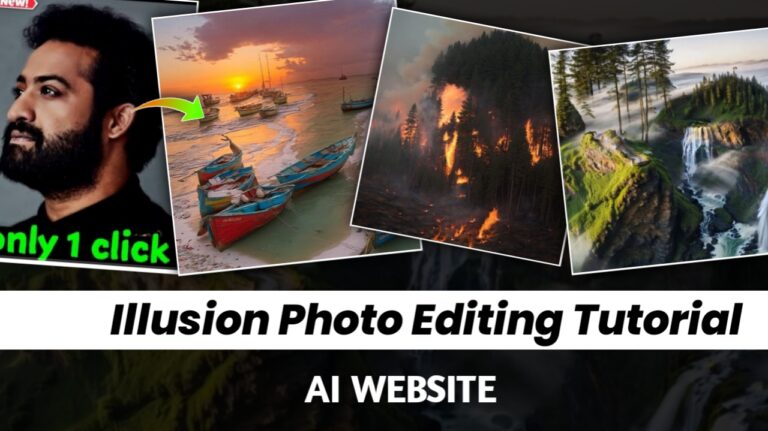Illusion photo editing has taken social media by storm, with users sharing creatively manipulated images that deceive the viewer’s perception. These photos, crafted using advanced editing techniques and clever perspectives, create optical illusions that make ordinary scenes appear extraordinary. By mastering illusion photo editing, you can transform your photos into viral sensations that captivate and engage your audience.
In this article, we will explore illusion photos, the techniques used to create them, and how you can get started with AI-powered illusion photo editing. Read on to discover the secrets behind these mesmerizing images and learn how to make your photos stand out on social media.
What is an Illusion Photo?
“Illusion photos” refer to photographs that intentionally create optical illusions or deceive the viewer’s perception. These photos often involve creative techniques, perspective manipulation, and photography skills to make objects or scenes appear differently from what they are in reality. Here are a few examples of illusion photos:
- Forced Perspective involves manipulating objects’ relative sizes and positions in a photo to create the illusion of depth or altered proportions. This technique is often used to make objects or people appear larger or smaller than they actually are.
- Mirror or Reflection Effects: Adding a mirror or water reflection effect to an image can create the illusion of symmetry and make the image look like it is reflected on a surface like water or glass.
- Levitation is the process of making objects or people appear as if they are floating in mid-air. This often requires combining multiple shots in post-processing to remove supporting objects.
- Tilt-Shift Effect: Simulating a shallow depth of field to make real-life scenes look like miniature models.
- Anamorphic Illusions: Creating distorted images that can only be viewed correctly from a specific angle.

How to Create Illusion Photos Using AI
Illusion photo editing typically involves using image editing software to create optical illusions or deceptive effects in photographs. Here are some standard techniques used in illusion photo editing:
Forced Perspective
This technique involves manipulating objects’ relative sizes and positions in a photo to create the illusion of depth or altered proportions. It is often used to make objects or people appear larger or smaller than they are.
Mirror or Reflection Effects
Adding a mirror or water reflection effect to an image can create the illusion of symmetry and make it look like it is reflected on a surface like water or glass.
Levitation
This technique involves making objects or people appear to be floating in mid-air. It often requires taking multiple shots and then combining them in post-processing to remove supporting objects.
Tilt-Shift Effect
This effect simulates a shallow depth of field, making real-life scenes look like miniature models.
Anamorphic Illusions
Creating distorted images that can only be viewed correctly from a specific angle.
Frequently Asked Questions(FAQs)
What software is best for illusion photo editing?
Popular software for illusion photo editing includes Adobe Photoshop, GIMP, and various AI-powered editing tools available online.
Can beginners create illusion photos?
Yes, beginners can create illusion photos by starting with simple techniques like forced Perspective and using online tutorials.
Are there mobile apps for illusion photo editing?
Several mobile apps, such as Snapseed, Adobe Lightroom, and Prisma, offer features for creating illusion photos.
How can I make my illusion photos look professional?
Practice is key. Study professional illusion photos, experiment with different techniques, and refine your skills using advanced editing tools.
Where can I share my illusion photos?
You can share your illusion photos on social media platforms like Instagram, Facebook, and Twitter to reach a broad audience and go viral.
Conclusion
Illusion photo editing is a powerful way to create captivating and viral images that stand out on social media. You can transform your photos into mesmerizing works of art by mastering techniques like forced Perspective, mirror effects, levitation, tilt-shift, and anamorphic illusions. With the help of AI-powered editing tools, these effects can be achieved more efficiently than ever before. Start experimenting with these techniques today and watch your social media presence soar.


